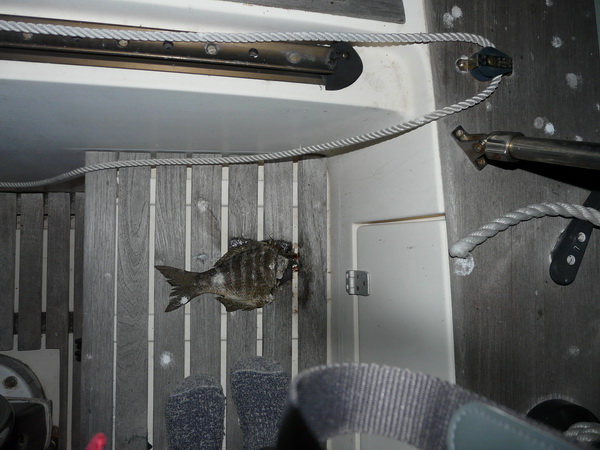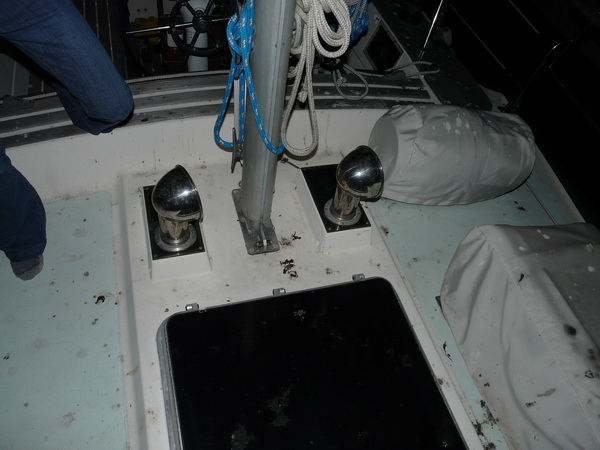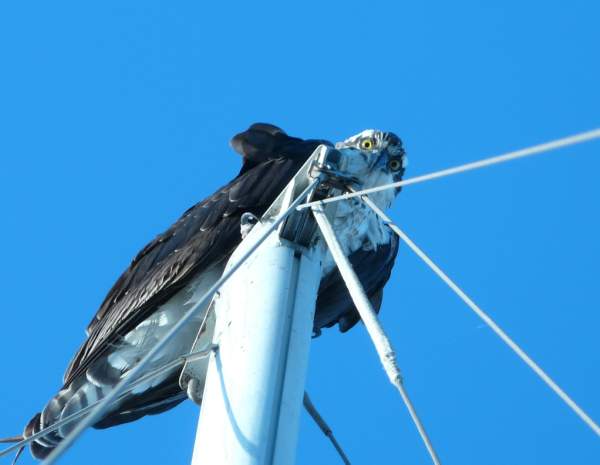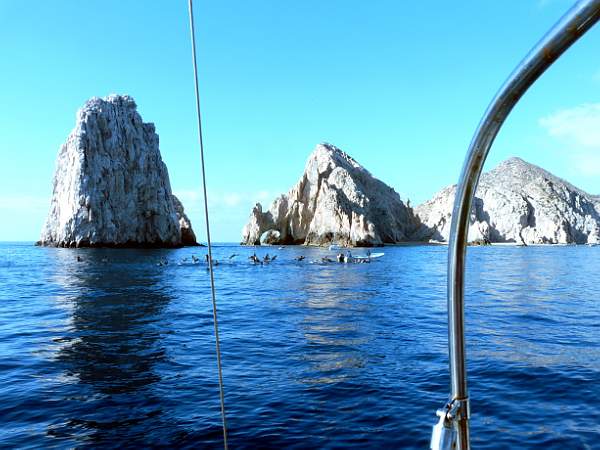Published in the Ocean Watch column, Honolulu Star-Advertiser © Susan Scott
January 9, 2009
CABO SAN LUCAS, Mexico » When I arrived in Ensenada recently to pick up my sailboat, I found the cockpit littered with dead fish. Odd, I thought, that some angler would be fishing from my aft deck in this well-guarded marina. It was late, though, and the trip from Hawaii had been long. I shrugged and went to bed.

The next morning, the dozens of brown splats on Honu’s deck, canvas and cockpit gave away the identity of my messy trespasser. An osprey had been fishing – and eating – from the top of my mizzen mast.


And so, from the minute I stepped onto my boat, my encounters with Baja’s abundant marine life began.
Before my boat and I arrived in Baja, I didn’t even know where or what it was, because the place names confused me. This 1,061-mile-long peninsula projecting southeast from California has California in its name but is not part of the U.S.
Baja California and Baja California Sur are two states in Mexico. The first is the northern half of the peninsula; the latter, the southern half. Tijuana is the northernmost city here, with Ensenada 68 miles south. Cabo San Lucas is the peninsula’s southernmost city and land’s end.
The Pacific Ocean lines Baja’s west coast, and the Gulf of California, also called the Sea of Cortez, lines the eastern shore. The plan was for me to get the boat to Cabo San Lucas, meet Craig there and sail north into that legendary sea.
In Ensenada my two friends and I threw fish heads and tails over the side, cleared a cockpit drain clogged with fish guts and set off for Cabo. Our expectation was to travel south with the gray whales, famous for their annual 12,000-mile migrations between the Arctic seas and Mexico. But the whales, we soon discovered, hug the contour of the land, while we sailed the safer and more direct route a couple of miles offshore.
Seeing only a few gray whales in the distance was disappointing, but not for long. The local dolphins – bottlenose, spinner, Pacific white-sided and harbor porpoises – made up for it. These exuberant marine mammals visited the boat often, riding the bow waves and leaping from the surface, some at night.
I know they were there on those black moonless nights because I could see them.
On one of my watches, I heard some odd splashing sounds, and when I looked over the side, I saw dozens of sparkling streaks. As dolphins raced through the water, they jostled organisms that make light when disturbed, turning the marine mammals into living comets. And when the dolphins leaped from the water, the bioluminescent organisms went off like fireworks.
I saw this amazing dolphin game on three successive nights, and once it went on for two hours. Each time, the dolphins swam only on the starboard side of the boat, where a green running light shone on the water’s surface. Apparently they were attracted to the color green.

My voyage south was nothing like I imagined, but as always it was a memorable adventure. I made it to Cabo in good time and in good company, and as I approached the harbor, a gray whale breached repeatedly, as if in welcome.
Craig and I have long wanted to sail the Sea of Cortez, and now we will. He arrives tomorrow.